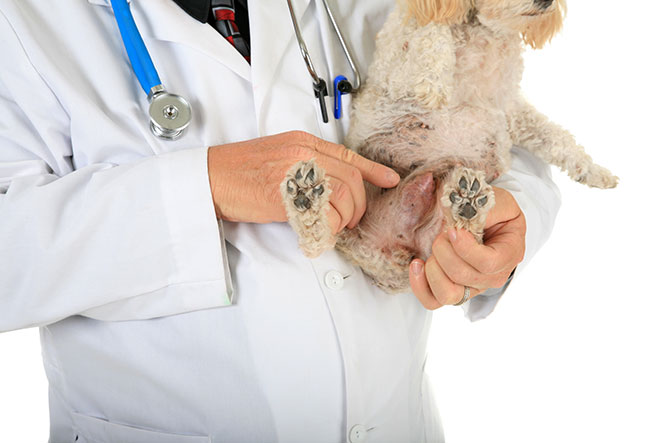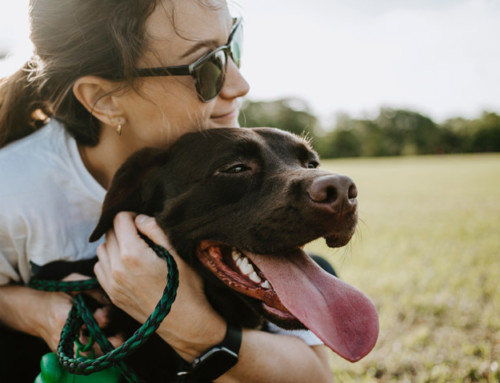No one wants to hear that their beloved dog has cancer. As scary a word as it is to hear, it’s very important as a dog owner to read up on what the causes and symptoms of cancer in your dog are, so that you are better equipped to make decisions when it comes to the health of your companion. We’ve compiled a helpful guide to introduce you to the possible causes, symptoms, and treatments of different types of cancer in dogs.
Causes
Unfortunately, cancer has no one single cause. There are multiple factors involved, including genetics, environment, and age.
Types
The most common cancer types are bone, breast, skin, mouth, and lymphatic system cancers. Most types occur in middle-aged to older dogs.
Symptoms
What is the main sign of cancer in dogs?“Dogs with cancer often display a number of symptoms, including limping, lumps, strange odours, wounds that don’t heal, weight loss, loss of appetite, difficulty breathing, pale gums, and lethargy. One of the most obvious signs is blood in the stools or difficulty going to the bathroom. A visit to the vet is advisable in all of these circumstances.” |
The top ten warnings to watch out for:
- Pain: – If your dog is limping with no obvious cause, it may be indicative of bone cancer, which is more common in larger breed dogs
- Lumps– If a bump appears and fails to resolve itself, have a vet do a biopsy to check for breast or skin cancer, especially if there is any oozing or discharge
- Odour – Strange or foul odours can be signs of cancer of the mouth, throat, or anal region. It’s good regularly check your dog’s breath to see if it smells worse than usual
- Wound– If a wound refuses to heal in a normal amount of time, this could be a display of infection or skin disease
- Weight loss– Sudden weight loss is a factor in many types of illnesses, including cancer. Your dog’s weight should stay consistent if they’re not on a diet
- Appetite changes– Dogs don’t stop eating without an underlying cause. Loss of appetite doesn’t necessarily mean cancer, but it’s a sign of possible sickness
- Difficulty breathing– Abnormal breathing or coughing can indicate heart or lung disease, as well as cancer
- Lethargy– Pay attention to any drops in your dog’s energy level. Depression, increased sleep, decreased play, and unwillingness to go for walks are all signs that something may be wrong
- Abnormal poops– Pay attention to your dog’s bathroom habits. If they have diarrhea, bloody stools, difficulty going to the bathroom, or more frequent-than-normal bathroom use, it’s time to see the vet. A distended or bloated stomach should also be checked for
- Pale gums– Know what your dog’s gums and teeth look like while healthy, so that if any changes in their mouth occur, you’ll spot it during your routine breath checkups. Abnormally pale gums may be a sign of blood loss, and cancer is an associated illness of this symptom.
Prevention
The most helpful way to prevent your dog from developing cancer is by getting them treated early on. Spaying a dog before her first heat cycle reduces her chance of breast cancer by eight times. Eliminate the possibility of testicular cancer by neutering.
Proper dental care is also important in lessening the likelihood of any mouth diseases.
If you have a purebred, research the breed to see what types of cancers are most common. This way, you’ll be able to more easily recognise early warning signs.
Unfortunately, the techniques of preventing your dog from getting cancer are minimal. Normally, the best anyone can do is learn the symptoms that may be signs of developing diseases, and call the vet if you are at all concerned.
Treatment
There are numerous treatment options depending on the type of cancer and at what stage it’s discovered. The most common options are surgery, chemotherapy, radiation, immunotherapy, or a combination of therapies. In the worst-case scenario, palliative care is also an option.
Your dog’s quality of life should always be the most important priority when dealing with a cancer diagnosis. The best way to give your dog a long and happy life is with regular vet and home checkups for early illness detection.
Pet insurance can give you the security of knowing no matter what happens, you’ll be ready. Learn more about the options here.







Leave A Comment